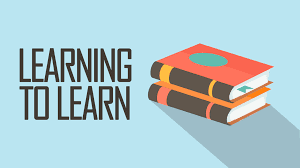Teaching reading and writing
" Teaching Reading and Writing"
Reading is a process of constructing meaning through
the dynamic interaction among the reader’s existing knowledge, the information
suggested by the written language and the context of reading situation. There
are several factors that influence reading in a second/foreign language:
· Cognitive development and learning style orientation at the time of beginning second/foreign language.
· First language metalinguistic knowledge· Second/foreign language proficiency
· First language and a second/foreign language degree of differences
· Cultural orientation
So, the concern of teaching reading might be schema
activation to make sense of new information in light of what they already know,
and to, make necessary connection between the two. The second one is vocabulary
development, is an important factor contributing to reading comprehension. To
improve comprehension, it will be done through wide reading approach, direct
direction and superficial instruction. For basis choosing words for vocabulary
development we need high frequency words, academic words/content area words,
literary words and low frequency words. The third is comprehension development,
for improve interaction we need reader, text and context must be taken into consideration.
The fourth one is understanding text organization, helps students to have a
blueprint for constructing a situational model of a story or information piece.
Students need to learn text types (narrative or expository), genre, hierarchy of
ideas in exposition, significant details in narrative and expository text and
use of graphic organization. Then the last is application, can helps readers
see the relevance of learning in their own life, or appreciate the nature of
their environment.
There are several principles for designing effective
and interesting reading lesson:
- · Reading
material are interesting for the students
- · The
major activities of the reading lesson are students reading text.
- · Activities
and exercise reflect the purposeful, task-based interactive nature of real
reading (predicting, hypothesizing and revising ideas about what was read)
- · Activities
and task allow the learners to bring their knowledge and experiences to the reading
passage.
- · Instructional
activities have TEACHING rather than testing focus.
- · A
variety of different reading activities are used during each lesson
- (to maintain interest, motivation and pace)
- · Lesson
should be divided into pre-reading, during reading and post reading.
Some strategies in teaching reading for vocabulary
development: structural analysis, context clue, intensive/extensive reading and
the last pleasure reading.
For activating prior knowledge is design to determined
what students already know about the topic that is going to be studied.
Procedure, before beginning a text, discuss the topic that will covered.
Assessment, discuss each question and determined from students answer which students
need additional information before beginning a lesson. Anticipating guide,
allows students to consider thoughts and opinions they have about various topic
in order to create an interest in the material that is being covered and to
establish a purpose for reading the material.
Writing is among the most complex human activities, it
involves the development of an idea, the capture of mental representations of
knowledge and of experiences with subject. The writer needs to know in order to
write effectively when undertaking a specific task:
-
i.
Content knowledge: knowledge of the concepts
involved in the subject area
-
ii.
Content knowledge: knowledge of the
context in which the text will be read
-
iii.
Language system knowledge: knowledge of
those aspects of the language system necessary for the completion of the task
-
iv.
Writing process knowledge: knowledge of
the most appropriate way of preparing for a specific writing task.
Writing theories:
Ø Writing
as a social and cultural phenomenon
Ø Writing
as a cognitive activity




Ulasan
Catat Ulasan